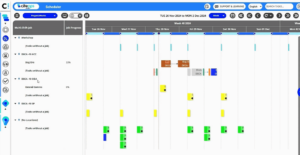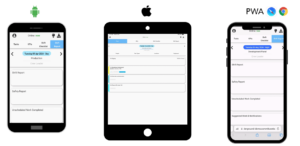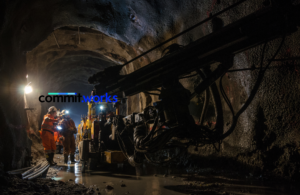As the mining industry continues to deal with disruption from the pandemic, mines around the world are adjusting in a still-uncertain environment to recover the business and scale quickly. They’re implementing new protocols around worker safety and reimagining the “next normal” on-site, while navigating new parameters for the industry overall.
COVID-19 aside, the mining industry is being shaped by major trends which cascade top-down from productivity to commitment and performance. The industry is under pressure as resources become more scarce and harder to mine. Despite a recent profit boom, productivity increases are threatened by the challenge of managing complexity in scaled up operations with expanding workforces.
Commitment and perfomance: which comes first?
A recent article identified the essential role digital transformation plays in the four key objectives mines might have post COVID-19, and offered two critical next steps leadership teams must take to achieve them. The first is shoulder-to-shoulder leader alignment. The second is most relevant in the work we do with mines around the world: “making sure each business unit has the capability to deliver changes from the bottom up.”
To mine leaders who are currently weighing their own organization’s readiness to transform in a COVID-19 “next normal,” I offer three critical capabilities that will determine the future success of any project: people, processes, and technology in that order.
People: The humanity of every project
Good transformation leaders recognise early there is ‘humanity’ in every project, and regardless of the critical technology, processes and procedures being implemented, people lie at the heart of successful change. The 70 percent failure rate of organizational change programs to meet their objectives connects back to how committed their people were to begin with. Unless change management is given an equally-critical status, the project will stall or worse, become little more than a costly venture that generates no real value to the business.
Change begets opportunity.
For mine leaders grappling with transformations thrust upon them due to the pandemic, here are four guiding principles to keep in mind when gauging organisational readiness for transformation and the essential role your team will play in it:
- Choose a partner who doubles down on change management. In everyone’s best interest they will take an honest assessment of your organization’s readiness for change, and build out timelines accordingly. And when the timelines are longer than you think they should be, extend them. It is easy to get lost in the gloss of technology and charge ahead for the shortest timeline to save costs in the name of good returns. Resist the urge.
- Change management is never done. Change is a must for companies of any size, industry or geography, and winning hearts and minds takes time. Particularly in a COVID-19 world, when so much is in flux, transformation does not stop when the partner departs or the software is up and running smoothly. There will always be room for refining, improvement and tweaks. If you’ve chosen the right partner, they’ll be equally invested in your success long after the engagement has wrapped up. The project may be done, but the relationship shouldn’t be.
- Start early. Once the need to change and destination have been identified, bring the entire impacted organization along on the journey – even and especially if unknowns still exist. This is for two reasons: First, commitment precedes performance. Input from teams should be part of the process and can inform procedures and processes that will impact them later, driving better engagement and commitment. Second, speaking early and openly about the destination, the journey, and the still-unknowns, creates opportunities for leaders to listen, answer questions, and continually reinforce the essential role teams will play in the transformation.
- Broaden the change agent/champion bench. Alignment at the top is essential to drive the project. But so are next-level leaders, and champions throughout the organization. Successful organisations are driven by people who make commitments to each other and then deliver on them. Identify and empower a network of frontline change agents early to lock in behaviours aligned with continuous improvement. They are part of the employee network colleagues rely on in their work.
Finally, make it visible.
At Commit Works, our market-leading frontline work management solution improves the coordination of day-to-day work performance. CiteOps enables everyone onsite to work together as a well-organised, high performing team. We’ve had the privilege of working with mine leaders on five continents, across multiple resource types and mining methods. Time and again, we see projects not just succeed but thrive – lifting their performance significantly.
This happens because mine leadership seized every opportunity to be visible – physically present – when discussing the project and its potential impact on the business and the team. So frequently, in fact, we believe it to be the best predictor of a transformation’s success. They took a bottom-up approach to link commitment to the project’s success. With visible leadership, expectations were clearly communicated and agreed upon, and their teams committed wholeheartedly to the project.
Commitment preceded performance.
There will be uncertainty for some time in this post-COVID-19 “new normal”. There will be course corrections, perhaps even reversals. But there is a path. Your people are the key to unlocking successful transformation. Make recognising humanity at the centre of every transformation the first step you take.





